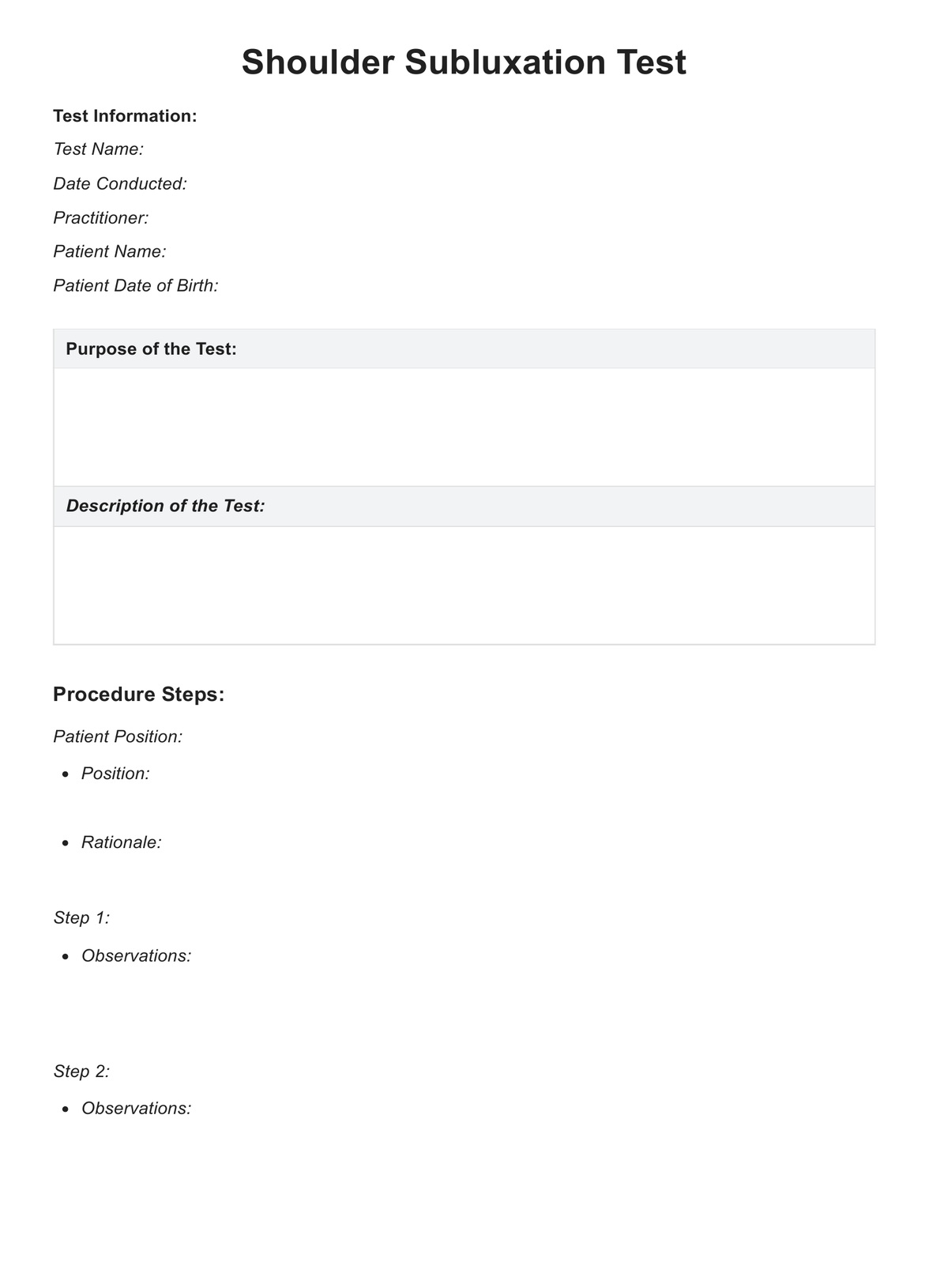Physiotherapists, orthopedic surgeons, and sports medicine specialists typically use Shoulder Subluxation Tests.

Shoulder Subluxation Tests
Optimize your Shoulder Subluxation Tests with Carepatron. Our globally compliant, user-friendly software simplifies test management for superior patient care.
Use Template
Shoulder Subluxation Tests Template
Commonly asked questions
Shoulder Subluxation Tests are used when a patient presents with shoulder pain or instability, particularly after a shoulder injury or trauma.
Shoulder Subluxation Tests involve specific movements of the arm and shoulder to assess stability and identify any abnormal motion. The healthcare professional observes the patient's reactions and any abnormal movement in the shoulder.
EHR and practice management software
Get started for free
*No credit card required
Free
$0/usd
Unlimited clients
Telehealth
1GB of storage
Client portal text
Automated billing and online payments











